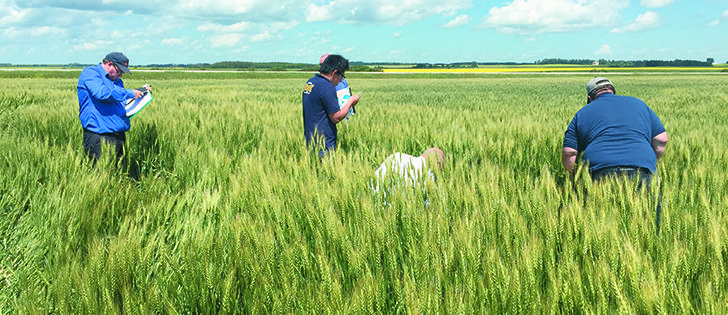Demand for crop commodities is stagnating, leading to weaker prices and pressure to reduce global crop area
The bullish agriculture commodity cycle has ended, says Dan Basse.
The president of Chicago-based AgResource Company said the grain trade has stagnated after a strong decade.
Farmers in Russia, Brazil and Canada have reacted to lower currencies relative to the U.S. dollar by producing more and the market appears unconcerned about shortages, he said.
“The problem this market has is, we lack a demand driver,” Basse said after a presentation at a wrap-up session for last week’s CWB prairie crop tours.
Read Also

Critical growing season is ahead for soybeans
What the weather turns out to be in the United States is going to have a significant impact on Canadian producers’ prices
“The Chinese may import a few more beans every year, but other than that, we’re looking at needing about 1.7 percent more grain globally to feed the population, that would include expanding diets and expanding disposable income, and we can do that through trend yields,” he said.
“I don’t need more acres. In fact I need fewer acres as I look at the next three to five years.”
Basse said how those acres come out of production and where they come from will determine the bottom of the market.
He suggested 15 to 20 million acres could or should come out of production and that is likely to happen in the United States.
“Our guess is, at the moment, because of currency, the U.S. dollar being strong, and as we start to normalize interest rates in the United States, indeed, we think those acres will come from the U.S.,” he said. “The problem being is that U.S. farmers are very difficult to take acres of production unless the government does it for them.”
He said in Canada there might be a few more idle acres than in the past due to lingering dry conditions but that will depend on precipitation after harvest, as well as the strength of the Canadian dollar.
Basse said the canola market is likely at the top. It has a “snug” stock outlook through most of the world.
“We thought canola would top somewhere between $550 and $575 (per tonne) Canadian and we think we’re about there,” he said.
There could be one more shot to the upside in late summer or fall if there are to poor harvest conditions but Basse said canola prices will slowly relax as China continues to import less.
“China is sitting on a five-million-plus-tonne surplus of canola oil. They need to move it,” he said. “We think under this high-priced environment of canola relative to soy they will do that and so they will be diminished importers of canola seed and oil in the year ahead,” he said.
World corn demand looks to be stable but the ethanol driver for the past 10 years is ebbing.
“It’s a much different environment than the last seven years in which we needed more acres for biofuels. We needed more acres for China’s soybean imports,” he said.
“That just doesn’t exist today and as such farmers should be rewarding these weather rallies when we have them.”
The U.S. durum and spring wheat crops look good and should be up 10 to 15 percent over last year, Basse said. Italy will also have a larger crop and won’t import as much durum, leading to a calmer world market given Canada’s durum production will be down this year.
“We still think durum prices will stay high relative to spring wheat.”
Basse added he doesn’t like where the market is going.
“The last nine or 10 years have been a lot of fun. Unfortunately, as agriculture built out in terms of better genetics, agronomics and more land being brought into production there’s another side to this, which is going to be not as much fun for the next five to seven years,” he said.
“The world in the last 10 years has brought an extra 175 million acres of land into production.”
karen.briere@producer.com


















